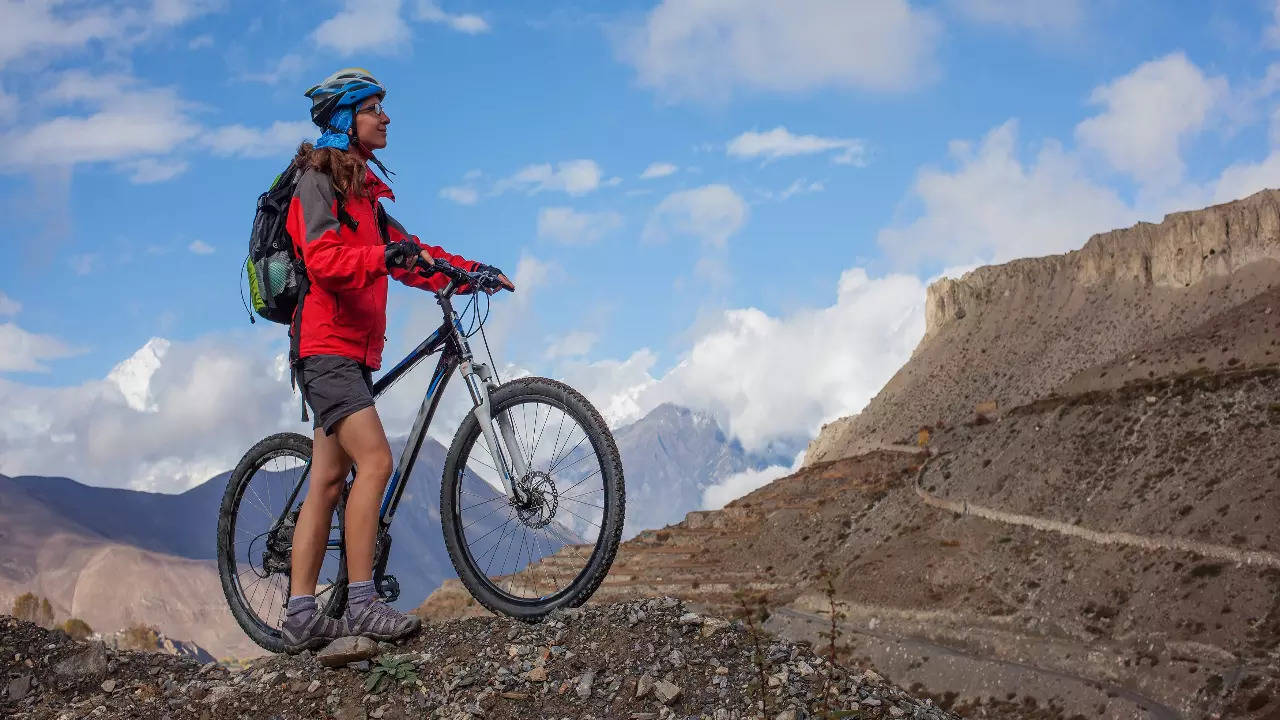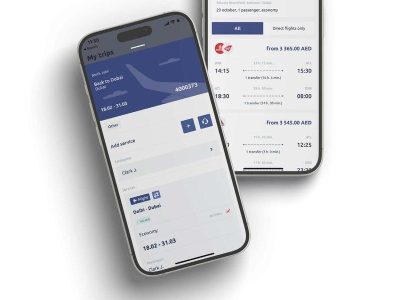Do you want a vacation that will take you away from the madding crowd, satiate your wanderlust and give you that adrenaline rush? International bicycle tours could just be the solution. How do you pick your bicycle tour and prep for them? Check our experts’ tips.
Check your route & weather before planning a tour: ExpertsIronman certified coach Ingit Anand says, “International cycling tours require a good endurance base. Training of minimum 12-18 months is recommended. There are various cycling tours in the Middle East, Europe, South East Asia and other parts of the world. Check for the weather information, appropriate cycling apparel, terrain of the particular tour, especially elevation gain, awareness about bike lanes, etc. Use a bike computer with the route pre-fed on it for easy navigation. One must be well versed with basic bike maintenance and carry spare tools for mechanical issues. And be prepared for hydration and nutrition during the ride. Focus on recovery with proper meals and sleep post each day of ride.”
Pre-trip training is essential: Cyclists
Nikhil D’souza, an avid cyclist who organises small group cycling tours, says, “Many don’t pay enough attention to pre-trip training. It is essential to exercise consistently each week. Also, some of your training should reflect the trip conditions. For example, if you’re taking a cycling trip to Southeast Asia, practice cycling alongside other vehicles to build your confidence.”
Cyclist Pinky Jha adds, “One has to be careful in picking the correct tour as per your fitness level. While preparing, apart from regular cycling 3-5 days a week, I would recommend hitting the gym for regular weight training specific to cycling muscle groups two days a week. Before embarking on a tour internationally, one needs to understand the route, wind patterns, road rules, local culture of that place with regard to how they see cyclists, the availability of appropriate lodging and boarding on road, personal safety measures to be taken and composition of the group you would be going with. Also check the expertise of the organiser.”
Popular routes to embark on a cycling tour:
1) Yungas-Straße, Bolivia
The Yungas Road in Bolivia, also known as “The Road of Death”, is one of the most dangerous cycling routes in the world due to steep slopes, frequent fog and rain. The route is 64 kilometres long, runs from La Paz to Coroico. It is suitable for professionals and adrenaline seekers.
Difficulty level: Extreme
2) La Route Verte, Canada
La Route Verte stretches over 5,300 kilometres throughout Quebec. The route covers both urban and rural areas – from Montreal and Quebec to vineyards and orchards. The routes vary in difficulty and length so that beginners and experienced cyclists will find suitable routes.
Difficulty level: Extreme
3) Danube Cycle Path, Austria
The Danube Cycle Path, one of the best-known cycle routes in Europe, spans over 2,850 kilometres, crossing Germany, Austria, Slovakia, Hungary, Croatia, Bulgaria, Romania, etc. The route is mostly flat and ideal for less experienced cyclists.
Difficulty level: Beginner
4) Shimanami Kaido, Japan
Shimanami Kaido Cycle Route connects the main island of Honshu to Shikoku Island, taking cyclists across six islands connected by suspension bridges, past fishing villages and groves of Hassaku orange trees. The 70-kilometre path is suitable for experienced cyclists and beginners.
Difficulty level: Moderate
5) Great Divide Mountain Bike Route
Running from Banff (Canada) to Antelope Wells (New Mexico, US), the off-road cycle route includes Yellowstone National Park.
Difficulty level: Extreme
6) Kanchanaburi, Thailand
Kanchanaburi is famous for its Hellfire Pass and the railway bridge over the River Kwai, built by prisoners of war during WWII.
Difficulty level: Extreme
7) Loire à Velo, France – The route traverses the Loire Valley, a UNESCO World Heritage Site, and passes châteaux, vineyards, etc.
Difficulty level: Moderate
8) Ella, Sri Lanka – Cycle through tea plantations, rural villages, and nature parks, and meet warm and friendly local villagers.
Difficulty level: Challenging
Know your fitness levels
1) Beginners: Ideal for flat terrain, no hills or anything of steep gradient, and low kilometre count. These are a good fit for a family with young children.
Cycling time: 20km or less per day
Fitness needed: Ideal for those who exercise regularly -running, swimming, etc. (thrice a week). The best training, of course, is cycling (daily).
2) Moderate: Ideal for cycling through the countryside, with occasional hills.
Cycling time: 20-45km per day
Fitness needed: Cyclists should be out 2-3 times per week striving for at least 1-2 hours in the saddle for about 3 km per ride.
3) Fit: Ideal for some cycling around the countryside, and with some hills with longer distance rides or hikes.
Cycling time: 45-60km+ per day
Fitness needed: You should be cycling at least (120-150 km) per week, including hill climbing and/or combining other workout activities to take these level trips
4) Challenging: Ideal for cycling on hilly countrysides and long days in the saddle.
Cycling time: 50-70km+per day+ hiking
Fitness needed: Cycling at least 250 km per week with hills and sustained climbs or a higher heart rate pace.
5) Extreme: Includes hiking and riding on unusual surfaces
Cycling time: Road tours could go 100km+ per day or include difficult climbs like Alpe d’Huez in France.
Fitness needed: Cyclists need to practise riding 10-12 hours per week with sustained climbing and descending as part of the ride.
Check your route & weather before planning a tour: ExpertsIronman certified coach Ingit Anand says, “International cycling tours require a good endurance base. Training of minimum 12-18 months is recommended. There are various cycling tours in the Middle East, Europe, South East Asia and other parts of the world. Check for the weather information, appropriate cycling apparel, terrain of the particular tour, especially elevation gain, awareness about bike lanes, etc. Use a bike computer with the route pre-fed on it for easy navigation. One must be well versed with basic bike maintenance and carry spare tools for mechanical issues. And be prepared for hydration and nutrition during the ride. Focus on recovery with proper meals and sleep post each day of ride.”
Pre-trip training is essential: Cyclists
Nikhil D’souza, an avid cyclist who organises small group cycling tours, says, “Many don’t pay enough attention to pre-trip training. It is essential to exercise consistently each week. Also, some of your training should reflect the trip conditions. For example, if you’re taking a cycling trip to Southeast Asia, practice cycling alongside other vehicles to build your confidence.”
Cyclist Pinky Jha adds, “One has to be careful in picking the correct tour as per your fitness level. While preparing, apart from regular cycling 3-5 days a week, I would recommend hitting the gym for regular weight training specific to cycling muscle groups two days a week. Before embarking on a tour internationally, one needs to understand the route, wind patterns, road rules, local culture of that place with regard to how they see cyclists, the availability of appropriate lodging and boarding on road, personal safety measures to be taken and composition of the group you would be going with. Also check the expertise of the organiser.”
Popular routes to embark on a cycling tour:
1) Yungas-Straße, Bolivia
The Yungas Road in Bolivia, also known as “The Road of Death”, is one of the most dangerous cycling routes in the world due to steep slopes, frequent fog and rain. The route is 64 kilometres long, runs from La Paz to Coroico. It is suitable for professionals and adrenaline seekers.
Difficulty level: Extreme
2) La Route Verte, Canada
La Route Verte stretches over 5,300 kilometres throughout Quebec. The route covers both urban and rural areas – from Montreal and Quebec to vineyards and orchards. The routes vary in difficulty and length so that beginners and experienced cyclists will find suitable routes.
Difficulty level: Extreme
3) Danube Cycle Path, Austria
The Danube Cycle Path, one of the best-known cycle routes in Europe, spans over 2,850 kilometres, crossing Germany, Austria, Slovakia, Hungary, Croatia, Bulgaria, Romania, etc. The route is mostly flat and ideal for less experienced cyclists.
Difficulty level: Beginner
4) Shimanami Kaido, Japan
Shimanami Kaido Cycle Route connects the main island of Honshu to Shikoku Island, taking cyclists across six islands connected by suspension bridges, past fishing villages and groves of Hassaku orange trees. The 70-kilometre path is suitable for experienced cyclists and beginners.
Difficulty level: Moderate
5) Great Divide Mountain Bike Route
Running from Banff (Canada) to Antelope Wells (New Mexico, US), the off-road cycle route includes Yellowstone National Park.
Difficulty level: Extreme
6) Kanchanaburi, Thailand
Kanchanaburi is famous for its Hellfire Pass and the railway bridge over the River Kwai, built by prisoners of war during WWII.
Difficulty level: Extreme
7) Loire à Velo, France – The route traverses the Loire Valley, a UNESCO World Heritage Site, and passes châteaux, vineyards, etc.
Difficulty level: Moderate
8) Ella, Sri Lanka – Cycle through tea plantations, rural villages, and nature parks, and meet warm and friendly local villagers.
Difficulty level: Challenging
Know your fitness levels
1) Beginners: Ideal for flat terrain, no hills or anything of steep gradient, and low kilometre count. These are a good fit for a family with young children.
Cycling time: 20km or less per day
Fitness needed: Ideal for those who exercise regularly -running, swimming, etc. (thrice a week). The best training, of course, is cycling (daily).
2) Moderate: Ideal for cycling through the countryside, with occasional hills.
Cycling time: 20-45km per day
Fitness needed: Cyclists should be out 2-3 times per week striving for at least 1-2 hours in the saddle for about 3 km per ride.
3) Fit: Ideal for some cycling around the countryside, and with some hills with longer distance rides or hikes.
Cycling time: 45-60km+ per day
Fitness needed: You should be cycling at least (120-150 km) per week, including hill climbing and/or combining other workout activities to take these level trips
4) Challenging: Ideal for cycling on hilly countrysides and long days in the saddle.
Cycling time: 50-70km+per day+ hiking
Fitness needed: Cycling at least 250 km per week with hills and sustained climbs or a higher heart rate pace.
5) Extreme: Includes hiking and riding on unusual surfaces
Cycling time: Road tours could go 100km+ per day or include difficult climbs like Alpe d’Huez in France.
Fitness needed: Cyclists need to practise riding 10-12 hours per week with sustained climbing and descending as part of the ride.










